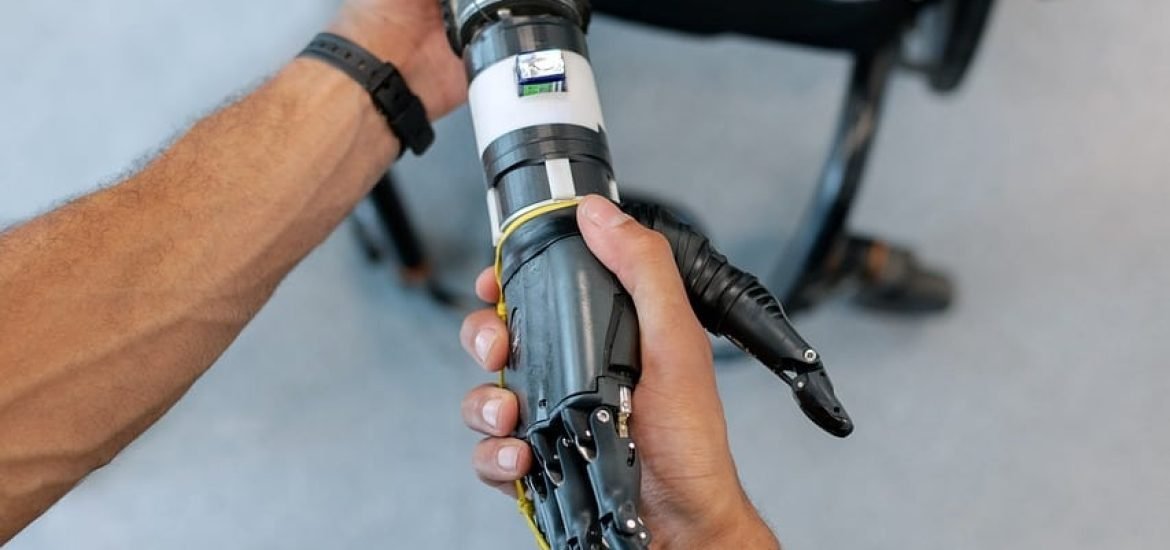
A team from Ecole Polytechnique Fédérale de Lausanne (EPFL), Switzerland, is engineering the human nervous system to be able to cope with an extra robotic arm.
For most of his career, Professor Silvestro Micera dedicated his time to helping people with motor and sensory deficits to regain independence and improve their quality of life with wearable and implantable technologies.
Now Professor Micera and his team are changing their focus. They want to explore ways to augment the human body in physical and cognitive terms. This year, the team will present their “third arm” research looking at how to add a third robotic arm to individuals. Essentially, this gives participants a third “robotic” arm they can control the same way as their own “biological” arms.
The aim is to provide a third arm using non-invasive techniques to help participants carry out their daily tasks. The team faces both technical and cognitive challenges, but it’s no longer an idea out of science fiction books. The team firmly believes this is possible. “Research on three arm control could help us understand how learning is achieved in activities of daily living, but these devices could also be used in logistics to facilitate complicated tasks,” explains Micera.
Professor Micera was the first one to provide sensory feedback in real time to an amputee. This work involved a bionic hand, with results that were published in 2014. This bionic technology provides sensory information through transversal electrodes surgically implanted into major nerves in the amputee’s arm.
Building from that technology, the team can now provide touch resolution of textures thanks to a bionic fingertip, improved embodiment of the prosthetic limb, and is developing a wearable and permanent prosthetic hand. The team hopes this technology can be used to restore other motor and sensory functions in cases like spinal cord injury or stroke.
Micera’s work on intelligent neuroprosthetics is brilliant, and it is now possible to imagine a future that would have been seen as science fiction not long ago. The big question now is, will it be acceptable to give healthy individuals this kind of transversal electrodes with sensory feedback, allowing them to control a third robotic arm as an extension of their own body?
https://aaas.confex.com/aaas/2023/meetingapp.cgi/Session/29964
https://aaas.confex.com/aaas/2023/meetingapp.cgi/Paper/30741